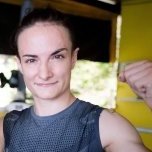-
Most Recent Topics
-
Latest Comments
-
I am soon to be 17 and I’ve been training Muay Thai for nearly 3 years now. I also happen to be doing quite well in school and plan to go to uni. However, that all changed when I went to Thailand last summer to train for a few weeks and fight. One of the trainers, with whom I have developed a close connection, told me not to go back home and stay in Thailand in order build a career. “You stay, become superstar” to quote him, as he pointed at the portraits of their best fighters hung on the gym’s wall. After realizing he wasn’t joking, I told him I couldn’t stay and had to finish my last year of high school (which is what I am currently doing) but promised him I’d come back the following year once I was done with school. Ever since, both these words and my love for Muay Thai resonate in me, and I can’t get the idea of becoming a professional fighter out of my head. On one hand, I’m afraid I’m being lied to, since me committing to being a fighter obviously means he gets more pay to be my coach. But on the other hand, it is quite a reputable and trustworthy gym, and this trainer in particular is an incredible coach and pad holders since he is currently training multiple rws fighters including one who currently holds an rws belt. And for a little more context, I don’t think this invitation to become a pro came out of nowhere, because during those few weeks I trained extremely hard and stayed consistent, which I guess is what impressed him and motivated him to say those words. Additionally, I was already thinking about the possibility of going pro before the trip because of my love for Muay Thai and because a female boxing champion who has close ties to my local gym told me I had potential and a fighter’s mindset. Therefore, I have to pick between two great opportunities, one being college and a stable future, and the other being a Muay Thai career supported by a great gym and coach. So far, I plan to do a gap year to give myself more time to make a decision and to begin my training in order to give myself an idea of how hard life as a pro is. This is a big decision which I definitely need help with, so some advice would be greatly appreciated.
-
When I've come out to Thailand to train (and holiday!), I've always trained just once a week for the first one. It takes a while for the body to adjust, especially with the heat and/ or humidity, and gives me a chance to recover and explore. After that, it depends on how I feel/ what my goals are. Sometimes I've switched to twice a day, other times I haven't. If you're coming out to fight, you might want to. If it's just to train, improve and enjoy your stay, sometimes twice a day is a slog. Your decision... Chok dee.
-
By Kevin von Duuglas-Ittu · Posted
Baudrillard. This is the art of Muay Thai.
-
-
The Latest From Open Topics Forum
-
By Kevin von Duuglas-Ittu · Posted
I'm sorry I don't really know. Sylvie is in touch with a collector and this person is where she buys hers, but there are not multiple copies available. Maybe someone else would know of a larger source. -
Where can I find some physical old Muay Thai magazines? I am located in Bangkok. Thanks
-
look up the sub reddit tresless its all about hair loss etc your options really boil down to about 4 fin pills min pills hair transplant let it go
-
thanks in advance for any help
-
Hello everyone, as someone deeply involved in Muay Thai, I've noticed early signs of hair thinning, particularly around the crown and temples. While it's common to see fighters with shaved heads, I'm interested in exploring an alternative to hair transplant for early hair loss that won't interfere with my training routine. Has anyone here experienced similar issues? What non-invasive treatments or lifestyle adjustments have you found effective? I'm particularly keen on options that won't disrupt my training schedule or require extended recovery periods. Looking forward to hearing your experiences and recommendations.
-
-
Forum Statistics
-
Total Topics1.4k
-
Total Posts11.6k
-
Footer title
This content can be configured within your theme settings in your ACP. You can add any HTML including images, paragraphs and lists.
Footer title
This content can be configured within your theme settings in your ACP. You can add any HTML including images, paragraphs and lists.
Footer title
This content can be configured within your theme settings in your ACP. You can add any HTML including images, paragraphs and lists.

Recommended Posts
Create an account or sign in to comment
You need to be a member in order to leave a comment
Create an account
Sign up for a new account in our community. It's easy!
Register a new accountSign in
Already have an account? Sign in here.
Sign In Now